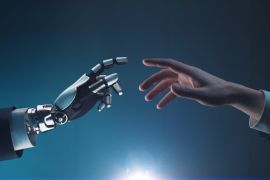The Monthly Digest - Feb 2017
Views, News & more

Your monthly round-up of all that's wonderful in the world of technology, science and, y’know, weird. Plus the occasional useful thing thrown in too.
DDoS attacks won’t go away
If your business isn’t yet prepared to manage the threat of Distributed Denial of Service (DDoS) attacks, it’s time to start. As we blogged recently, 2016 was a big one for DDoS attacks and, just a few weeks into 2017, the signs aren’t great for this year either. Lloyds was the latest big name to be hit by a DDoS attack, which sees websites flooded with enormous traffic levels in the hope of taking them offline. The DDoS, which came with a ransom attached to it, ran from Wednesday 11 January to Friday 13 January and affected Lloyds, Halifax and Bank of Scotland, although no customer accounts were successfully hacked and Lloyds did not pay a ransom. As Deloitte warns that DDoS attacks are only set to get worse this year, get protected now.
BBC invests in virtual reality
Although we argue there are adoption challenges to the technology, we see virtual reality dominating 2017’s field of play as businesses and organisations start to use it more and more. A further sign of this has been a new virtual reality experience based on Nasa's training programme which has been commissioned by the BBC. Home: A VR Spacewalk lets you look down on the Earth from space before going on an emergency mission. Take a look – it’s great.
Uber announces major change of gear
App-based taxi service Uber is the kind of firm you could imagine manufacturing self-driving cars, right? Well, yes indeed. But, as the company announced this week, while it certainly sees its future in autonomous vehicles, it won’t be building them itself. Instead, Uber will work with Daimler to use the firm’s self-driving cars on its network over the coming years. Uber CEO Travis Kalanick said the tie-up could mean self-driving cars on our roads sooner than planned. “Auto manufacturers like Daimler are crucial to our strategy because Uber has no experience making cars—and in fact, making cars is really hard,” Kalanick said.
Trump’s pushed us further to apocalypse
Who knows where his reign will end? Donald Trump hasn’t exactly been backward in coming forward since becoming the most powerful man in the (western?) world, and his “disturbing” comments could be responsible for pushing us further to global catastrophe. The scientists behind the Doomsday Clock have moved the time of humanity’s predicted demise 30 seconds forward as Trump, climate change and nuclear proliferation all combine to teeter us on the brink. The clock is a metaphorical one, used by scientists since 1947 to demonstrate the chance of global apocalypse. We are now two-and-half-minutes away from midnight – the last time we were at that level was the height of the Cold War. The end is nigh…
But we’ll see you next month.
Get in touch
020 7847 4510
We may process your personal information in order to send you information you request, measure and improve our marketing campaigns, and further our legitimate interests. For further details, see our privacy policy.
Contact us
-
- Head Office:
- hSo, 50 Leman Street, London, E1 8HQ
- Switchboard:
- 020 7847 4500
- Support (24x7):
- 0333 200 3337
- support@hso.co.uk
- Marketing & Sales:
- 020 7847 4510
- info@hso.co.uk

















